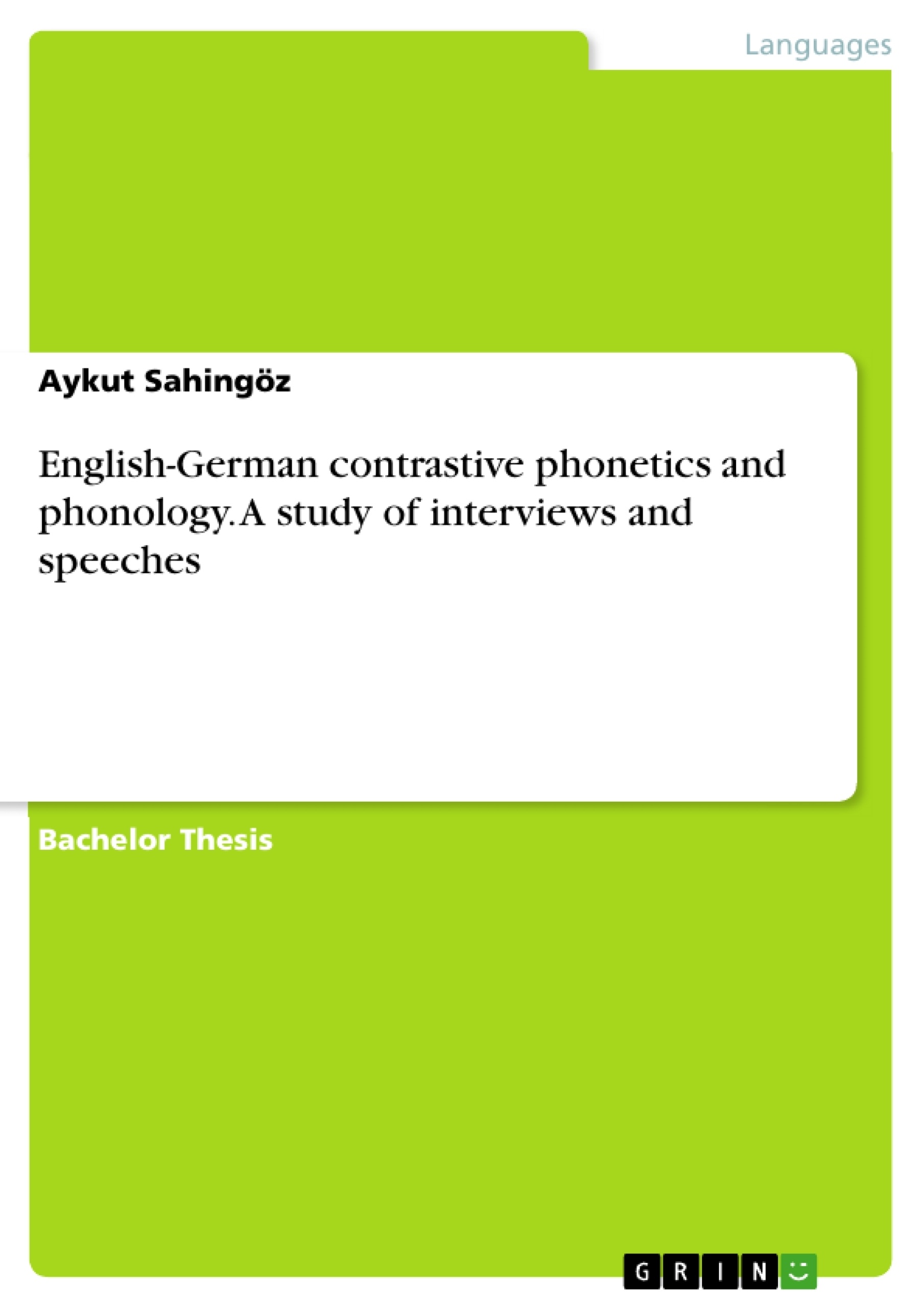The linguistic differences between German and English are going to be researched and compared, in order to light upon the reasons for mispronunciations and difficulties for German speakers of English. Learning a language or a skill in general, naturally needs practice and commitment to be able to master it. However, this text is going to leave this aspect aside and will concentrate on differences which emerge from the languages themselves. German and English are two different languages with the same Latin alphabet and different grammar for the naked eye, but beneath the surface are further differences and similarities which can be described in order to understand why German speakers of English seem to produce the same mistakes when no practice for correct pronunciation is given.
The importance of English has increased over the past years and is one of the most spoken and important languages. It is needed in business relations, to read manuals, can be used in almost all foreign countries for communication and is generally important for every working citizen in terms of a business language, as former European Commissioner Günther Oettinger stated in his interview with German broadcast channel SWR in 2005. In 2010 a speech of Oettinger was published, which was held in the Columbia University of Berlin and showed, after his contribution in the broadcast, that his English proficiency was not appropriate when considering the circumstances.
Especially in terms of politics, an individual wants to be taken seriously and act superior in all tasks given to comply with the role of a representative politician. After Oettinger held his speech, it was naturally connected to what was originally said by him, with the obvious connotation that he failed to meet his own expectations in English acquisition by far, although it was of utmost importance. The English language however can be difficult for foreign speakers. Although being of the same Germanic origin as German, many foreign speakers experience a hard time when trying to achieve native-like pronunciation. Words such
as squirrel, all words with a 'th-' and minimal pairs (e.g. hat and had) are often difficult to pronounce and distinguish for foreign learners, due to phonetic and phonemic differences, which cannot easily be translated into the German system due to their non-existence.
Table of Contents
- 1. Introduction
- 2. Theoretical Background
- 2.1 Historical background of the English and German language
- 2.2 The development of English
- 2.3 The development of German
- 3. Contrastive Analysis of English and German phonetics and phonology
- 3.1 Consonants
- 3.1.1 English and German consonant inventory
- 3.1.2 Phonemic articulatory similarities and differences
- 3.1.3 Allophonic, distributional and phonetic difficulties
- 3.2 Vowels
- 3.2.1 Comparison of the German and English vowel inventories
- 3.2.2 General differences between the German and English vowel inventories
- 3.3 Phonotactic Constraints
- 3.3.1 Syllable building in English and German
- 3.3.2 Comparison of phonotactic rules and restrictions
- 4. Prominent examples for English mispronunciations in German interviews and speeches
- 4.1 Examples for consonantal difficulties
- 4.2 Examples for difficulties with vowels
- 4.3 Phonotactical examples
- Historical development of English and German
- Contrastive analysis of English and German phonetics and phonology
- English mispronunciations in German interviews and speeches
- Phonetic and phonemic differences between the languages
- Phonotactic constraints and their impact on pronunciation
- Chapter 1: Introduction
This chapter introduces the topic of English pronunciation difficulties for German speakers. It highlights the importance of English in the contemporary world and uses the example of a German politician's English speech to illustrate the potential consequences of mispronunciation. The chapter also outlines the research objectives and the focus on examining linguistic differences between English and German. - Chapter 2: Theoretical Background
This chapter provides a historical overview of English and German languages, focusing on their development and the emergence of distinct features. It discusses the prevalence of English as a global language and its impact on education and society, especially in Germany. The chapter also explores the concept of language transfer and its implications for foreign language learning. - Chapter 3: Contrastive Analysis of English and German phonetics and phonology
This chapter delves into the phonetic and phonological differences between English and German, analyzing their consonant and vowel systems. It highlights the similarities and differences in phonemic inventories, articulatory features, and allophonic variations. The chapter also investigates phonotactic constraints, focusing on syllable building and phonotactic rules in both languages. - Chapter 4: Prominent examples for English mispronunciations in German interviews and speeches
This chapter examines specific examples of English mispronunciations by German speakers in interviews and speeches. It categorizes these errors based on consonantal difficulties, vowel errors, and phonotactic violations. The chapter aims to demonstrate how the phonetic and phonological differences identified in previous chapters manifest in real-life speech.
Objectives and Key Themes
This thesis examines the phonetic and phonological differences between English and German, aiming to understand why German speakers often struggle with English pronunciation. It explores the historical development of both languages, analyzes their respective consonant and vowel systems, and investigates phonotactic constraints.
Chapter Summaries
Keywords
English-German contrastive phonetics, phonology, pronunciation, mispronunciation, interviews, speeches, consonant inventory, vowel inventory, phonotactic constraints, language transfer, historical development, Germanic languages, global language.
- Quote paper
- Aykut Sahingöz (Author), 2019, English-German contrastive phonetics and phonology. A study of interviews and speeches, Munich, GRIN Verlag, https://www.grin.com/document/538938



